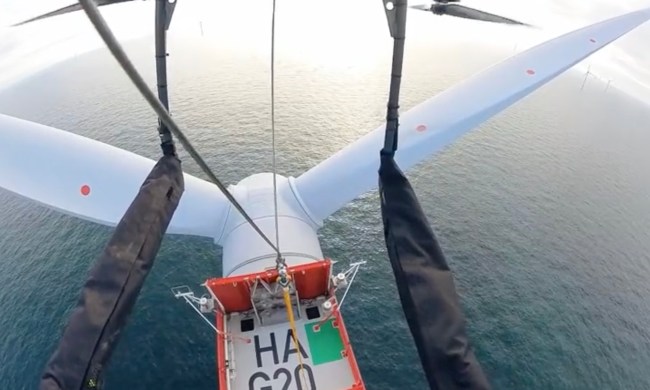By making use of their incredible mobility and dexterity, these vacuum-suction-powered robots can move upside down and “normally” across ceilings, roofs, and just about any other surface to connect carbon fiber strings from metal anchors. All you have to do is specify the volume of the finished product. Then, let the drones take care of the weaving.
The impressive process is powered by algorithms that provide all the necessary coordination between the robots — string is quickly passed back and forth between the drones involved (at least two, but potentially more), and the finished product can be a piece of art, a functional piece of furniture, or really, both.
“One can imagine a fabrication process where an operator arrives to the scene with a suitcase housing all the necessary robots and materials to create a large structure,” the project site notes. “These agile mobile robotic systems move robotic fabrication processes beyond the constraints of the [assembly line], exposing vast urban and interior environments as potential fabrication sites.”
So why buy ready-made furniture when you can get it made on site by robots?
And while you may not think that carbon fiber sounds like the ideal material for creating a cozy living space, researchers behind the weaving drones note that we’re already using a lot of this material in our day-to-day lives. “Composites such as carbon fiber-reinforced polymers are already being used for interiors and consumer products such as cars, airplanes, furniture,” adviser Marshall Prado told Fast Company. “Creating these novel adaptive processes allows us to overcome these limitations in order to create more performative architectural systems.”


